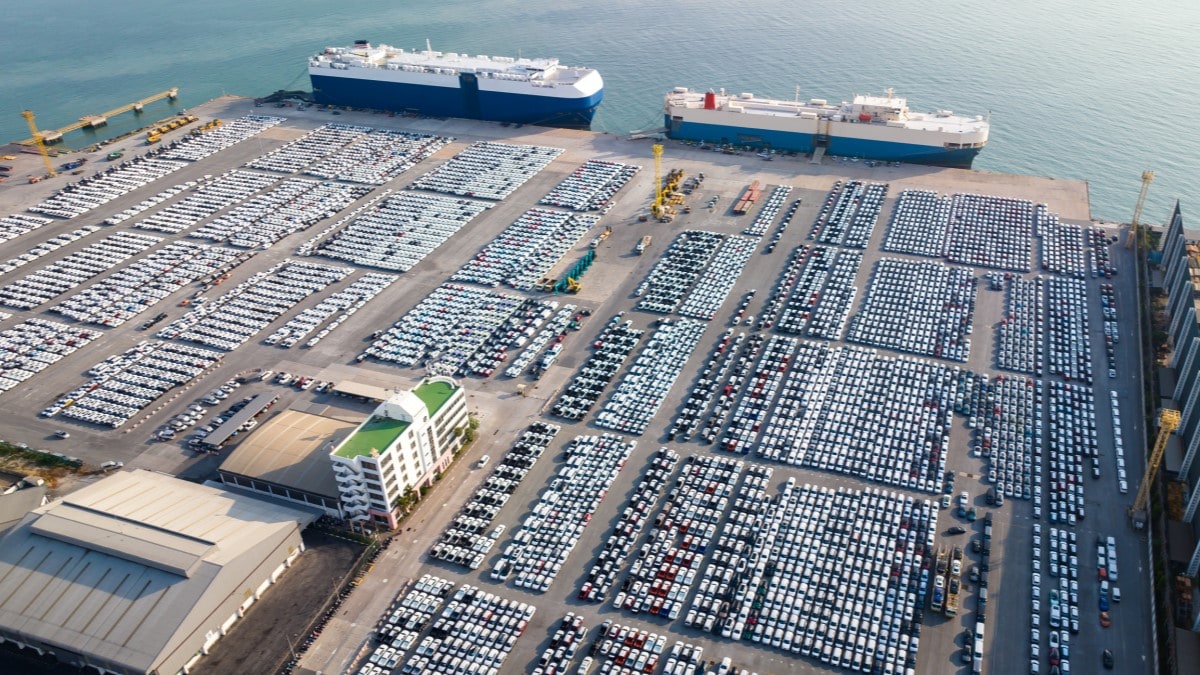
America’s automakers are beginning to report the first financial results impacted by President Trump’s aggressive car tariffs, and the early signs are not good. But there may be hope ahead. A member of the president’s cabinet yesterday hinted strongly that the president will take steps to ease the tariff burden on automakers soon. However, he will likely not waive tariffs altogether.
GM Acts as Canary in Coal Mine
General Motors, America’s largest automaker, is often the first to report sales. This morning, the company said it had beaten first-quarter sales projections but warned investors that worse was coming. CNBC notes that GM “is reassessing its 2025 financial guidance and suspending any additional stock buybacks amid expected cost increases and industry uncertainty regarding Donald Trump’s ongoing auto tariffs.”
That’s in keeping with projections from Kelley Blue Book and its parent company Cox Automotive, which say that automakers will enjoy a brief burst of sales as Americans look to buy the last cars imported at pre-tariff prices, then see sales fall dramatically as post-tariff cars become the only option on sales lots.
Commerce Secretary: Changes Coming Today
Commerce Secretary Howard Lutnick, an architect of the tariff policy, suggests that help is coming.
Lutnick said yesterday that Trump had reached a “deal” to soften tariffs for automakers. It’s unclear who Trump dealt with.
In a White House statement, Lutnick said, “This deal is a major victory for the president’s trade policy by rewarding companies who manufacture domestically, while providing runway to manufacturers who have expressed their commitment to invest in America and expand their domestic manufacturing.”
Three Separate Tariffs
Automakers are subject to two rounds of tariffs today, with a third scheduled to take effect soon.
One, already in place, applies a 25% levy on all steel and aluminum goods imported into the U.S.
A second, also applied now, adds 25% to the cost of any car imported from outside the U.S., Canada, or Mexico (a handful of cars built in Canada and Mexico get a tariff).
A third, set to begin next week, would add 25% to the cost of any car part imported from outside the U.S. All cars built in the U.S. use foreign parts, so this set will raise the price of every vehicle.
Report: Stacking Ends, Some Reimbursement Coming
The Wall Street Journal, citing “people familiar with the matter,” said that Trump will end so-called “stacking” that applies multiple tariffs to the same items. “Automakers paying Trump’s automotive tariffs won’t also be charged for other duties, such as those on steel and aluminum.”
The move, the Journal reports, “would be retroactive.”
The Journal adds, “the administration will also modify its tariffs on foreign auto parts – slated to be 25% and effective May 3 – allowing automakers to be reimbursed for those tariffs up to an amount equal to 3.75% of the value of a U.S.-made car for one year.” Reimbursement would fall to 2.5% in a year, and end a year later.
The Commerce Department is in the process of writing rules that will trigger the parts tariff. Trump ordered officials to publish the rules by May 3. But writing these regulations is unusually challenging. Many car parts are made of parts, and often cross borders multiple times during assembly. That makes calculating the U.S. content of any given part a complex exercise.

